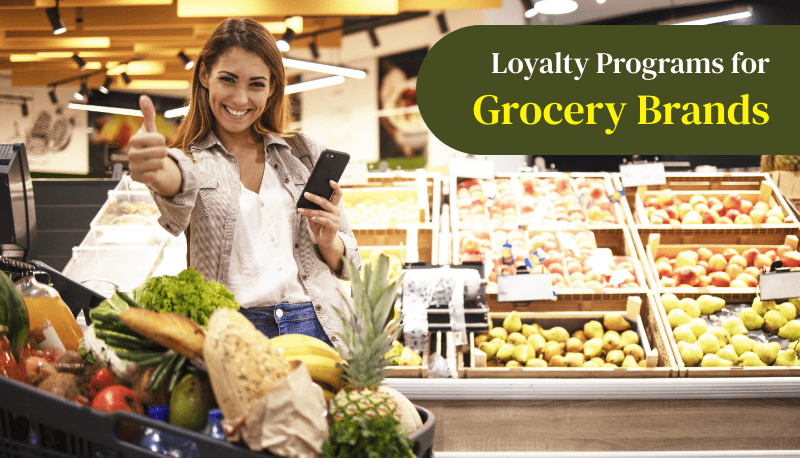A premium loyalty program can make grocery and hypermarket chains stand out from competitors. With low margins and growing competition from online players like Amazon, grocers must focus on value-focused customer experiences.
One way to do this is by rewarding customers for specific behaviors, such as check-ins, product referrals, and app engagement. Some platform enables this by recognizing different attributes and communicating relevant offers on each channel.
Reward Customers for Buying
In a highly competitive landscape, it can be challenging for grocery and food & beverage businesses to differentiate themselves and build strong customer relationships. However, a well-designed loyalty program is a powerful tool that can provide tangible rewards for customers, incentivize them to continue shopping or dining with a particular business, and provide valuable customer data for companies to use in their marketing strategies and product development.
While point-based loyalty programs are standard in the retail sector, the grocery industry can go even further and develop a more personal experience for customers. For example, grocers can leverage loyalty software to offer shoppers customized checkout coupons that can be instantly applied at the cashier. This helps drive incremental sales and makes customers feel valued for their loyalty.
Another great way to reward loyal customers is by offering tiered membership levels. This creates a sense of progression and exclusivity for customers who participate in the program and encourages them to spend more with the grocery retailer to reach higher tiers.
Finally, supermarkets can leverage loyalty technology to partner with other brands in a coalition loyalty program. For example, it rewards its members with bonuses on purchases made with partners, a kid’s clothing label, or a health insurance provider. Moreover, the program has partnerships with a charity, a gym, and a cinema – allowing them to capture a more significant share of the consumer’s wallet in exchange for better insight and increased loyalty.
Increase Convenience
Many grocery store loyalty programs take a traditional approach that rewards customers after each purchase. This is a proven way to incentivize customers and can boost sales. But, it’s essential to purposefully select what customers need to do to qualify for a reward, creating a mutually beneficial exchange rather than one-sided gift-giving.
For example, you could offer an in-store shopping discount or a checkout coupon that immediately saves the customer money. This instantly gratifies them, which helps reinforce the value of your program and encourages repeat visits. You can also add a level of gamification by offering points that can be redeemed for higher rewards at the end of the cycle, which incentivizes shoppers to return for more.
Additionally, you can use loyalty data to target promotions based on transaction history and shopping habits. For example, if Mary usually buys fresh produce on the weekends and you know she has a low milk or fruit consumption, you can send her a personalized recommendation for those items.
Convenience has become a key driver of consumer purchasing decisions. Customers want the same buying experience in-store, app, or online. This is why the ability to offer personalized offers based on time, shopping history, and purchase behavior is so powerful for loyalty marketers in the grocery and food & beverage industries.
Increase Revenue
In the grocery industry, where competition is fierce, and there are limited new customers to attract, it is essential to focus on customer retention and engagement. A loyalty program is an ideal way to do this by delivering value-added benefits and a seamless experience that incentivizes repeat purchases.
Traditional point and reward mechanics in grocery loyalty programs have traditionally focused on transactional rewards like discounts or free products. However, today’s customers want more personalization and unique experiences from their favorite grocery store brands. Providing personalized recommendations based on their food preferences, shopping patterns, nutritional information, and other data points can add value and drive more spending.
Offering exclusive and personalized experiences like gift cards, unique swag, or even guided tours of your flagship stores is a great way to differentiate your brand. These experiential rewards provide a high-value, one-of-a-kind incentive more valuable than simple discounts or freebies.
Tiered loyalty programs perfectly fit the grocery industry, providing a clear sense of progression and achievement. Customers who work hard to advance to a higher tier are likelier to stay loyal to the brand that has made them feel valued.
Increase Customer Satisfaction
In a retail industry where customer loyalty is paramount, providing customers with a personalized experience is vital. A well-designed and implemented grocery loyalty program can increase customer satisfaction, boosting brand equity and delivering a positive ROI.
In-store services like drive-through pick-up, curbside delivery, in-store cafes, and quick checkout options can help grocers provide an omnichannel customer experience. These experiences can be incentivized with loyalty program offers to encourage customers to come back and purchase more.
Grocery loyalty programs are a popular way for retailers to collect zero- and first-party customer data, including shopping habits and preferences. Some allow grocery stores to recognize shoppers across global payment types, brands, channels, and devices with one unique token identifier. This unified view of their shoppers enables grocers to deliver timely and relevant omnichannel promotions and a more personalized customer experience.
Grocers need to understand what incentives will resonate with their customers. Direct cashback and discounts are everyday loyalty rewards for grocery shoppers but may not be as effective as other incentives, such as store credit or gift cards. Using tiered membership levels, where customers can earn or unlock new benefits as they reach specific spending thresholds, can also add an element of exclusivity and progression to your loyalty program. This can encourage customers to spend more to achieve higher tiers and grow their business with you.

